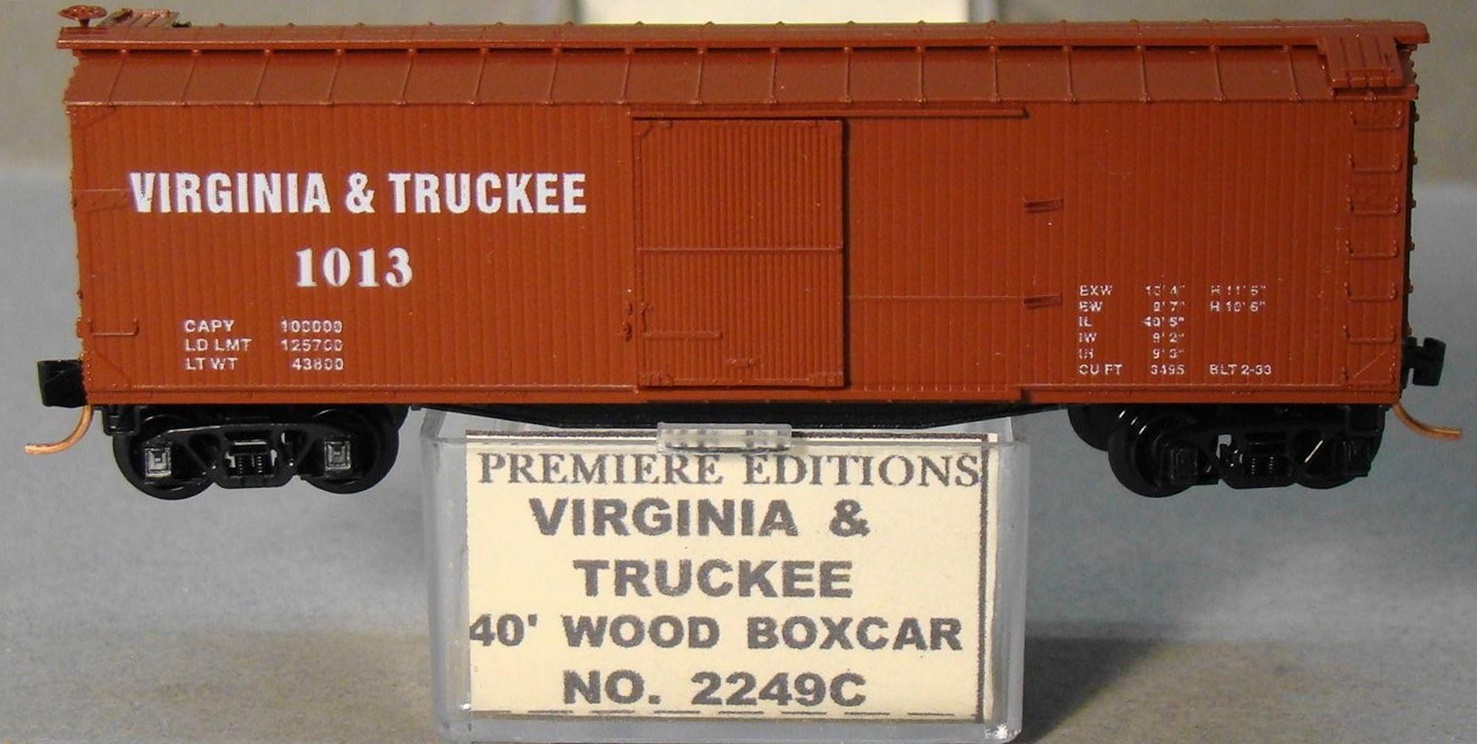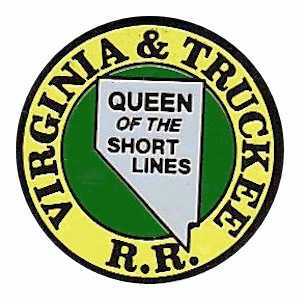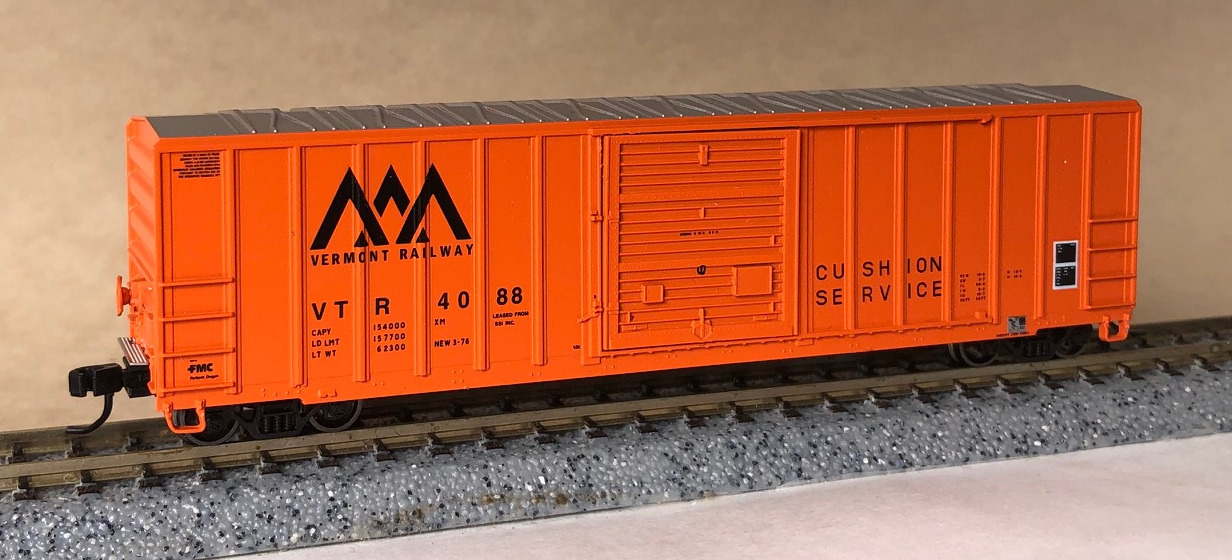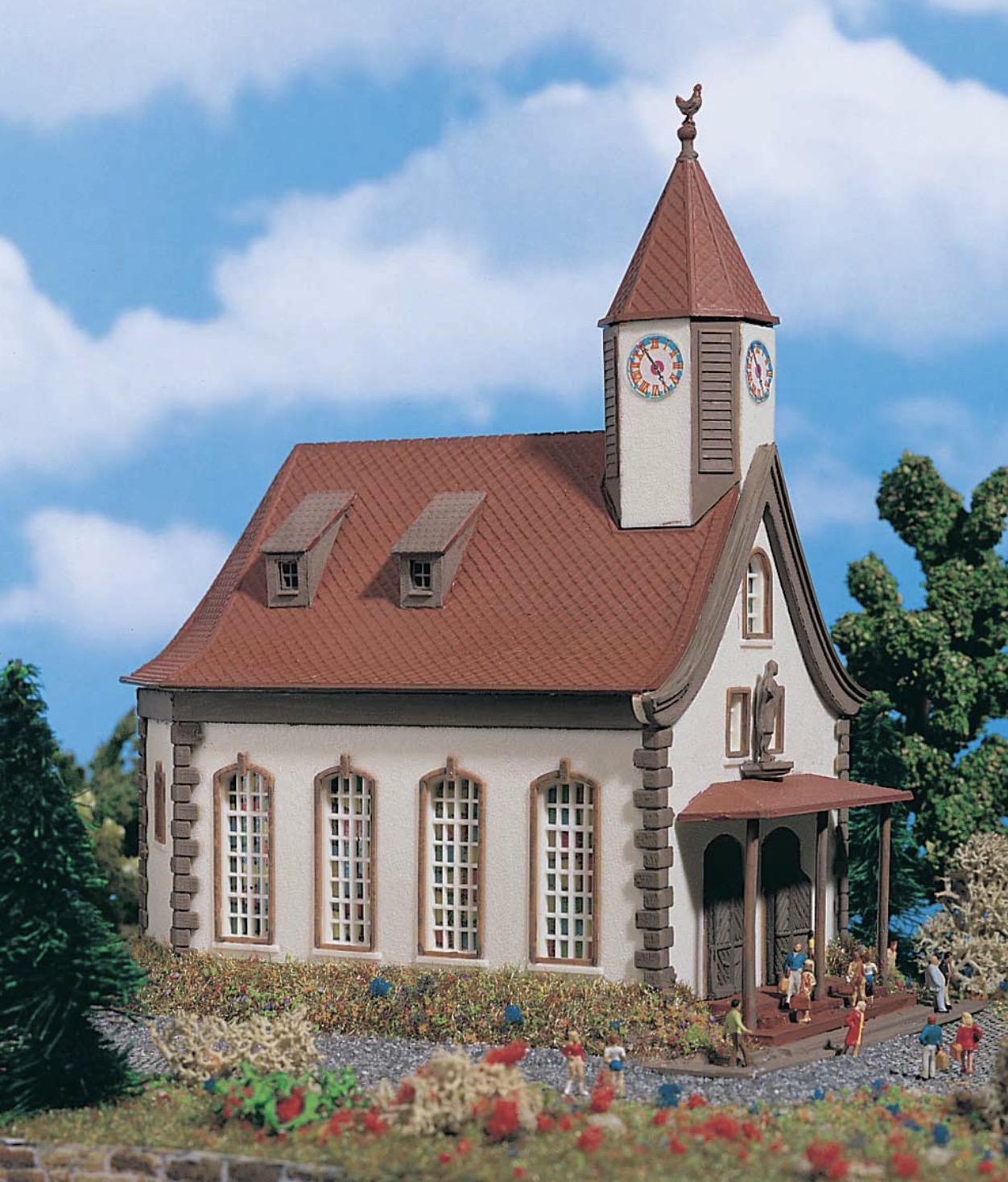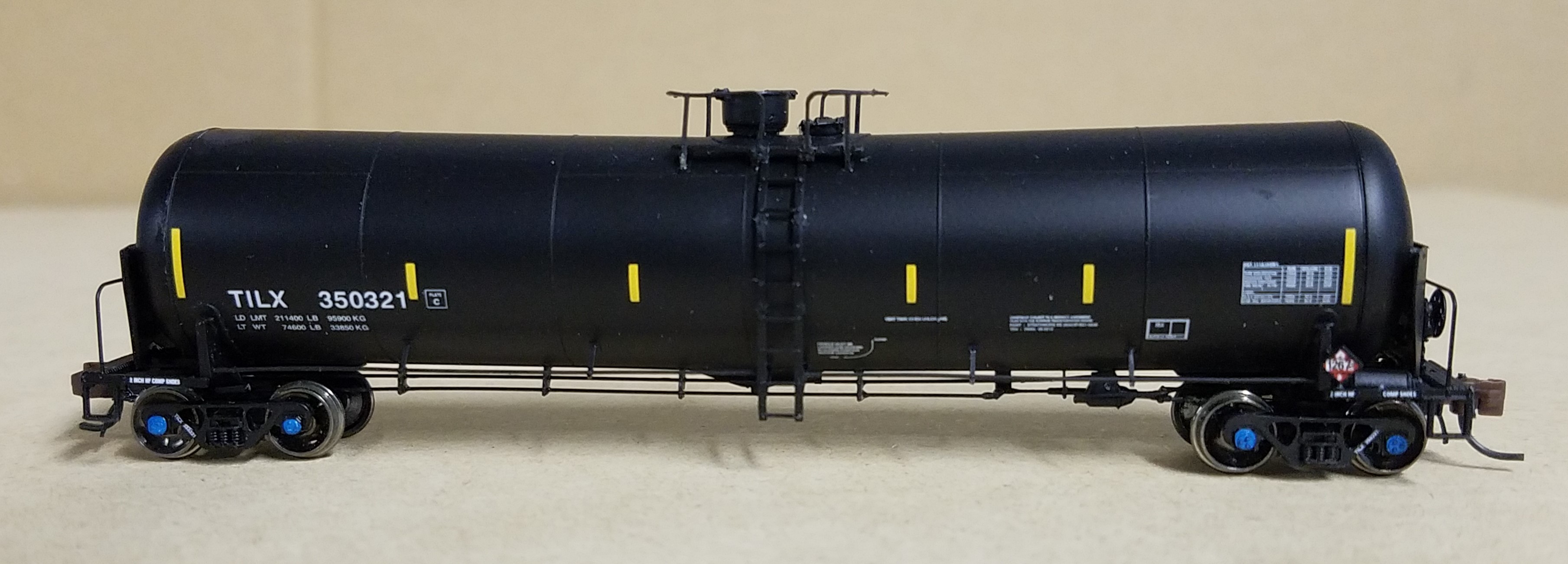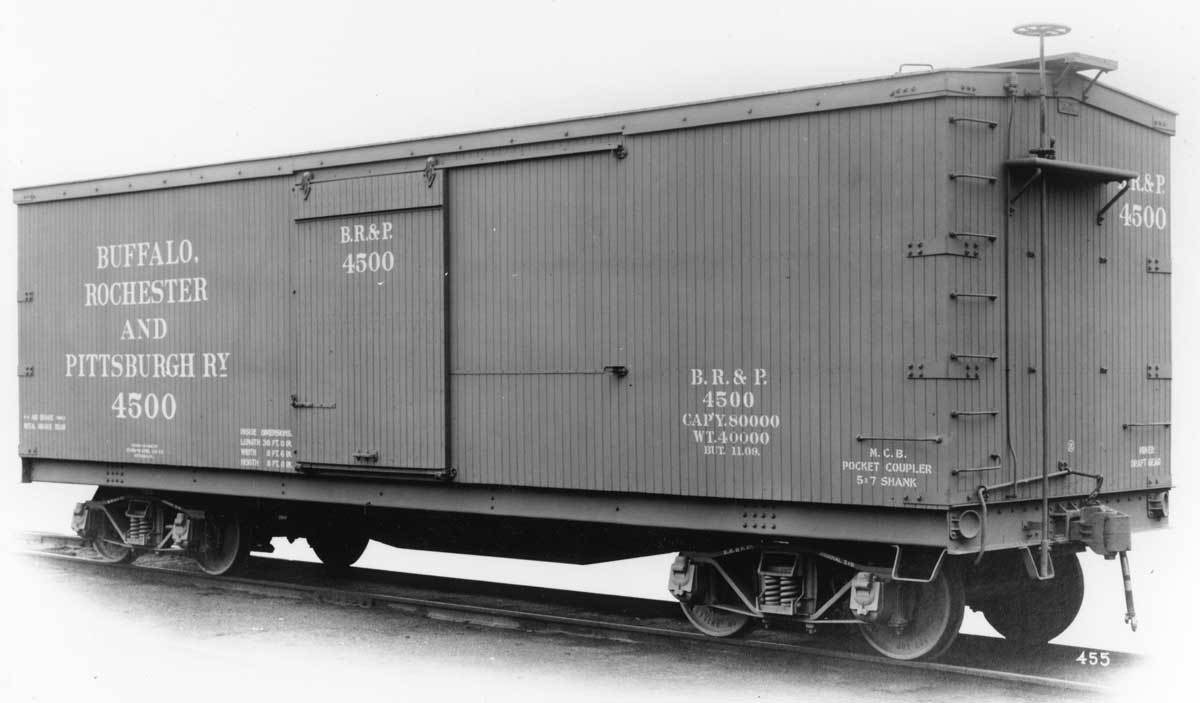Prototype History: Double sheathed all-wood boxcars in 34', 36' or 40' length were built with trussrods into the 1900's. By about 1910-15 cars often were being built of wood but with steel underframes. BTW many early boxcars were only about 8-1/2' high, though taller 10' cars were beginning to be built by the WW1 era (like the USRA wood boxcar) but that didn't become the norm until the late 1930's.
Later in the 20's-30's, some cars were built with double or single sheathed woodsides but steel underframe, roof and ends. In the later 30's into the 40's some older cars built with wood except for the steel underframes were rebuilt with steel ends and roofs. Some of these cars with steel roof and ends (either new or rebuilt) lasted into the 1960's.
During WW2, steel was in short supply, so some new boxcars were built with steel roof and ends, but wood sides. These too sometimes lasted into the "diesel era", although many were rebuilt with steel sides after the war.
Later in the 20's-30's, some cars were built with double or single sheathed woodsides but steel underframe, roof and ends. In the later 30's into the 40's some older cars built with wood except for the steel underframes were rebuilt with steel ends and roofs. Some of these cars with steel roof and ends (either new or rebuilt) lasted into the 1960's.
During WW2, steel was in short supply, so some new boxcars were built with steel roof and ends, but wood sides. These too sometimes lasted into the "diesel era", although many were rebuilt with steel sides after the war.
Road Name History: The Virginia and Truckee Railroad (reporting mark VT) was built to serve the Comstock Lode mining communities of northwestern Nevada. At its height, the railroad's route ran from Reno south to Carson City, Nevada. In Carson City, the mainline split into two branches. One branch continued south to Minden, while the other branch traveled east to Virginia City. The first section from Virginia City to Carson City was constructed beginning in 1869 to haul ore, lumber and supplies for the Comstock Lode.
The railroad was abandoned in 1950 after years of declining revenue. Much of the rail infrastructure was pulled up and sold, along with the remaining locomotives and railcars. In the 1970s, with public interest in historic railroads on the rise, the old lines were rebuilt by private investors, with an eye towards re-opening the lines.
Today, the privately owned Virginia and Truckee Railroad Company operates as a heritage railroad, headquartered in Virginia City. The present route is 14.1 miles (22.7 km) long. The railroad owns and uses the service mark "Queen of the Short Lines". The V&T Railroad runs up to seven trains per day, many in steam behind locomotive #29, a 2-8-0 Consolidation, or an ex-US Army GE 80-ton diesel from Virginia City from Memorial Day until the end of October each year.
Read more on Wikipedia.
The railroad was abandoned in 1950 after years of declining revenue. Much of the rail infrastructure was pulled up and sold, along with the remaining locomotives and railcars. In the 1970s, with public interest in historic railroads on the rise, the old lines were rebuilt by private investors, with an eye towards re-opening the lines.
Today, the privately owned Virginia and Truckee Railroad Company operates as a heritage railroad, headquartered in Virginia City. The present route is 14.1 miles (22.7 km) long. The railroad owns and uses the service mark "Queen of the Short Lines". The V&T Railroad runs up to seven trains per day, many in steam behind locomotive #29, a 2-8-0 Consolidation, or an ex-US Army GE 80-ton diesel from Virginia City from Memorial Day until the end of October each year.
Read more on Wikipedia.
Brand/Importer Information: The Freight Yard was a hobby shop that did custom decoration and special runs of other manufacturers' N Scale products. It sold its custom products under several brands or collections: Premiere Editions, by The Freight Yard and Dreams Design.
It was located in Anaheim, California and then moved to 2006 in Phoenix, Arizona.
Established in the late 1980s, it stopped business under this name by the end of the 2000s.
The Freight Yard was owned and operated by Darren J. Cohen. Darren is now operating North Valley Trains.
The Freight Yard / Premiere Editions runs are usually available in series of two to twelve different numbers (suffixed A to M, with I not used).
The first two digits of the stock number correspond to the release year (9x being 199x, and 2x being 200x).
It was located in Anaheim, California and then moved to 2006 in Phoenix, Arizona.
Established in the late 1980s, it stopped business under this name by the end of the 2000s.
The Freight Yard was owned and operated by Darren J. Cohen. Darren is now operating North Valley Trains.
The Freight Yard / Premiere Editions runs are usually available in series of two to twelve different numbers (suffixed A to M, with I not used).
The first two digits of the stock number correspond to the release year (9x being 199x, and 2x being 200x).
Manufacturer Information:  Micro-Trains Line split off from Kadee Quality Products in 1990. Kadee Quality Products originally got involved in N-Scale by producing a scaled-down version of their successful HO Magne-Matic knuckle coupler system. This coupler was superior to the ubiquitous 'Rapido' style coupler due to two primary factors: superior realistic appearance and the ability to automatically uncouple when stopped over a magnet embedded in a section of track. The success of these couplers in N-Scale quickly translated to the production of trucks, wheels and in 1972 a release of ready-to-run box cars.
Micro-Trains Line split off from Kadee Quality Products in 1990. Kadee Quality Products originally got involved in N-Scale by producing a scaled-down version of their successful HO Magne-Matic knuckle coupler system. This coupler was superior to the ubiquitous 'Rapido' style coupler due to two primary factors: superior realistic appearance and the ability to automatically uncouple when stopped over a magnet embedded in a section of track. The success of these couplers in N-Scale quickly translated to the production of trucks, wheels and in 1972 a release of ready-to-run box cars.
Micro-Trains Line Co. split off from Kadee in 1990 to form a completely independent company. For this reason, products from this company can appear with labels from both enterprises. Due to the nature of production idiosyncrasies and various random factors, the rolling stock from Micro-Trains can have all sorts of interesting variations in both their packaging as well as the products themselves. When acquiring an MTL product it is very important to understand these important production variations that can greatly enhance (or decrease) the value of your purchase.
Please consult our Micro-Trains Collector's Guide

Micro-Trains Line Co. split off from Kadee in 1990 to form a completely independent company. For this reason, products from this company can appear with labels from both enterprises. Due to the nature of production idiosyncrasies and various random factors, the rolling stock from Micro-Trains can have all sorts of interesting variations in both their packaging as well as the products themselves. When acquiring an MTL product it is very important to understand these important production variations that can greatly enhance (or decrease) the value of your purchase.
Please consult our Micro-Trains Collector's Guide
Item created by: Alain LM on 2022-11-19 07:01:29. Last edited by Alain LM on 2022-11-19 11:20:19
If you see errors or missing data in this entry, please feel free to log in and edit it. Anyone with a Gmail account can log in instantly.
If you see errors or missing data in this entry, please feel free to log in and edit it. Anyone with a Gmail account can log in instantly.


